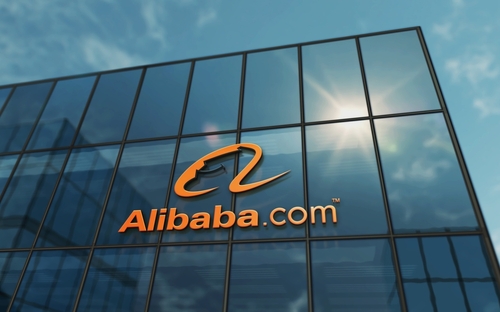CoreWeave: A Promising AI Growth Stock


While global stock markets have been disrupted by U.S. tariff hikes, the IPO of CoreWeave has become a key focus of attention.
Building Infrastructure for AI
CoreWeave’s core strength lies in providing computing power, distinguishing itself from conventional data centers. Unlike general-purpose data centers built for cloud-based applications, CoreWeave's data centers are specifically designed to support artificial intelligence (AI) services. This specialization enables faster and more efficient completion of AI-related tasks, allowing the company to capitalize on the surge in demand for generative AI and other AI services. As a result, CoreWeave's revenue experienced exponential growth, increasing by 737% year-on-year in 2024, reaching $1.9 billion.
Nvidia Holds Over 5% Equity Stake
High growth naturally attracts investor interest, but what draws even more attention is CoreWeave being regarded as the "favored child" of chip giant Nvidia (NASDAQ: NVDA). According to the company’s IPO filing, Nvidia holds a 5.18% stake in CoreWeave's Class A shares post-IPO, slightly diluted from its 5.96% pre-IPO stake. With a market capitalization of $25 billion as of Thursday, Nvidia’s stake is valued at approximately $1.3 billion (equivalent to about HK$10.1 billion).
CoreWeave was founded in 2017, initially as an Ethereum mining company. By the end of 2018, it had deployed more than 50,000 GPUs, accounting for over 1% of the Ethereum network's computing power, making it the largest Ethereum miner in North America. However, as competition in the mining space intensified and electricity prices rose, the founders recognized the diminishing long-term advantages of mining. In 2019, CoreWeave shifted its focus to purchasing enterprise-grade GPUs and building specialized cloud infrastructure, aligning its business around Nvidia's chips. During this transition, many mining companies faced bankruptcy, reducing demand for Nvidia chips. However, CoreWeave continued to stockpile GPUs and expand its business, securing a reliable supply of Nvidia’s in-demand chips, such as the H100, even during periods of tight supply. Notably, in August 2023, CoreWeave completed $2.3 billion in debt financing, using Nvidia chips as collateral, demonstrating that in the AI era, GPUs are nearly as valuable as currency.
Reducing AI Model Training Costs
CoreWeave's business covers multiple areas:
1. Infrastructure Services: Providing cutting-edge computing, networking, and storage infrastructure.
2. Managed Software Services: Offering fully managed deployments to maximize workload efficiency, such as Kubernetes hosting and virtual private clouds.
3. Application Software Services: Delivering tools to accelerate and enhance training and inference processes.
4. Task Control and Observability Services: Offering comprehensive visibility and control over infrastructure and workloads to ensure optimal configurations and functionality while reducing complexity and overhead costs for customers.
CoreWeave’s use cases are diverse, including machine learning, AI, visual effects, and rendering. For example, CoreWeave Cloud is designed specifically to enable highly scalable and cost-effective model training. The company has supported Novel AI, a subscription service for story creation and image generation, by training and deploying generative chatbot services. CoreWeave also provided visual effects and rendering services for Game of Thrones, leveraging its massive GPU resources and specialized architecture to accelerate rendering processes, significantly reducing time and costs while enhancing image quality.
Microsoft as the Largest Customer Raises Concerns
CoreWeave’s growth has been rapid. Its revenues from 2022 to 2024 were $160 million, $229 million, and $1.9 billion, respectively, representing year-on-year growth rates of 1,346% and 737%, highlighting its impressive growth trajectory.
However, CoreWeave is still in the expansion phase and remains unprofitable. Its net losses in 2022, 2023, and 2024 were $31 million, $594 million, and $863 million, respectively, while adjusted net losses were $27 million, $45 million, and $65 million. Despite revenue growth outpacing losses in 2024, the timeline for achieving profitability remains uncertain. Operating margins have shown improvement, but debt levels have increased significantly due to expansion.
To gauge CoreWeave’s future value, it is crucial to monitor the pace of AI development and demand, particularly given the potential impact of U.S. tariffs introduced during the Trump administration. Additionally, CoreWeave faces customer concentration risks, as Microsoft (NASDAQ: MSFT) accounted for 62% of CoreWeave’s revenue in 2024. Although this proportion is expected to decline (e.g., OpenAI signed a contract in March to procure $11.9 billion worth of services through October 2030), Microsoft’s financial impact on CoreWeave remains significant.
Reports on Thursday indicated that Microsoft has paused or delayed data center construction projects in multiple locations, including Illinois, North Dakota, and Wisconsin in the U.S., as well as Indonesia, the UK, and Australia. Additionally, Microsoft has reportedly abandoned plans to expand its use of CoreWeave’s computing resources. While CoreWeave claims to have found other buyers, this development is worth monitoring. On the other hand, as AI demand continues to grow, the decision by tech giants to scale back their own data center investments may not necessarily be a negative development for CoreWeave.
According to Bloomberg data, CoreWeave’s projected revenue for 2025 is $8.1 billion, representing year-on-year growth of 326%, with another projected increase of approximately 49% in 2026. The company’s 2025 price-to-sales (P/S) ratio is estimated at 3.5x, which is not particularly expensive. However, given market volatility, it may be prudent to wait for a better entry point.
Conclusion: CoreWeave’s Strong Potential in the AI Era
CoreWeave’s unique position in the AI infrastructure space, strong ties with Nvidia, and rapid revenue growth make it a standout player in the AI market. While concerns over profitability and customer concentration remain, the company’s ability to adapt to market changes and attract other major clients highlights its resilience.
As AI demand continues to rise, CoreWeave is poised to benefit from its specialized infrastructure and strong partnerships. For investors, the company represents a promising growth story in the AI sector, with significant potential for long-term returns. However, given current market conditions, a more favorable entry point could provide an even better opportunity for investment.
By Tim Chen, MoneyClub financial writer
Having over 10 years of investment analysis experience and serving as a financial columnist.







